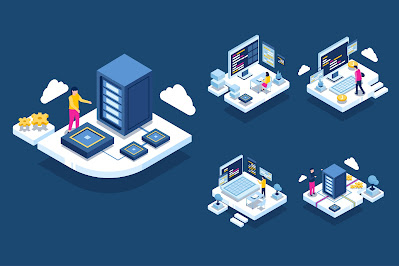
The Office of the Future is already here, and it needs a lot of work. COVID has been a good thing because it has helped people who work from home. But now, COVID has been a bad thing because jobs are not as secure. In remote cultures, the home office is like an extension of your company. It is like another part of it. But we haven't yet built that into our workplaces or made sure that people can access the tools they need within their homes or at public spaces like coffee shops.
For the most part, people had not
considered it in such terms previously. Certainly not to the extent that we
have to now.
Setting aside venture capitalists and
long-time teleworkers/freelancers, the typical home office and remote IT setup
is as technically capable as a cube-farm from 2005. In a second, I'll explain
more about it.
If you asked the average company's
leadership the following questions:
1. Do you want your teammates to be able
to perform at their full potential?
2. Do you worry about your workers and
client data?
3. Overall, do you have a firm grip on
things and high expectations?
Not a single self-respecting leader would
respond to any of those queries with "no." But consider it from the
perspective of a typical front-line worker's home office environment at the
moment:
1. Tools' accessibility and useability
Which apps are they using? Who's supposed
to be using them? Do they have everything they need? If they don't, how quickly
can they get it in a way that is efficient, secure, and traceable? For most
businesses, On a yearly basis, you simply need to purchase licenses as they
become necessary and then inform the CFO at the end of the quarter. This has
become a problem for a long time. It costs money and is not safe.
2. System performance is predictable
Some people live near a great ISP, while
others do not. Some are unaware of what they have or could have. Almost no one
has a business-grade router. Add in the computer, which is often used for
personal computing as well as work – does it have regular system maintenance? The
network and the computer management must be totally redesigned in a WFH
scenario.
3. Collaboration
Replacement of in-person contact means
employing externals, digital whiteboards, cameras, smart keyboards, and other
technologies. To be the cultural glue of your firm, you must first become
well-versed in certain aspects of your craft. Do you know what you need? Is it
possible that everyone at your company knows absolutely what to do and how to
improve? Has this been implemented in a cohesive way?
If you think that remote work will
continue to grow in popularity, then the idea of a home office being an
extension of your business (and therefore) your duty must stick.
The office at the home of the future
should be built upon a few fundamental ideas:
Near-seamless production of work, free
from technical problems and business risk.
1. Apps are installed, updated, and
patched automatically and/or semi-autonomously as needed.
An app is accessible on-demand to a team
member through automation. We developed an excellent self-service tool on JAMF
and will release a similar one for Windows shortly.
2. Performance and security of laptops
The computer must be in good operating
condition and operate effectively, and if it isn't, a remote assistance
technician needs to repair it as soon as feasible. It's critical that users can
access and use all of the devices from a single location. We automated JAMF and
Kaseya deployment at Electric, creating a centralized management console so
that even a non-technical individual can manage hundreds or thousands of
devices.
3. Network / ISP performance
The majority of businesses want to do
more with less, and IT departments are no exception. With a few minor changes
and adjustments, you may streamline operations using virtualization technology
to manage hundreds or thousands of home networks from one location. We're
developing a common WFH
IT Infrastructure at Electric, which consists of a relatively
inexpensive business router that can be dropped delivered to someone's house
and set up in minutes.
4. Peripherals
Standardize all office from home
peripherals, including shipping and installation. "Just get a second
monitor" may seem easy, but there's more to it - a designer and a
salesperson require different monitors. Is there a digital whiteboard? What's
your strategy for hard phones and softphones? Explain what you mean by that.
There's a lot to consider!
The future of work has arrived early.
It's either really cool or not so great, depending on who you ask. You're most
likely in it right now. Perhaps a dog farted under your desk, or a youngster
requested an iPad of you.
Comments
Post a Comment